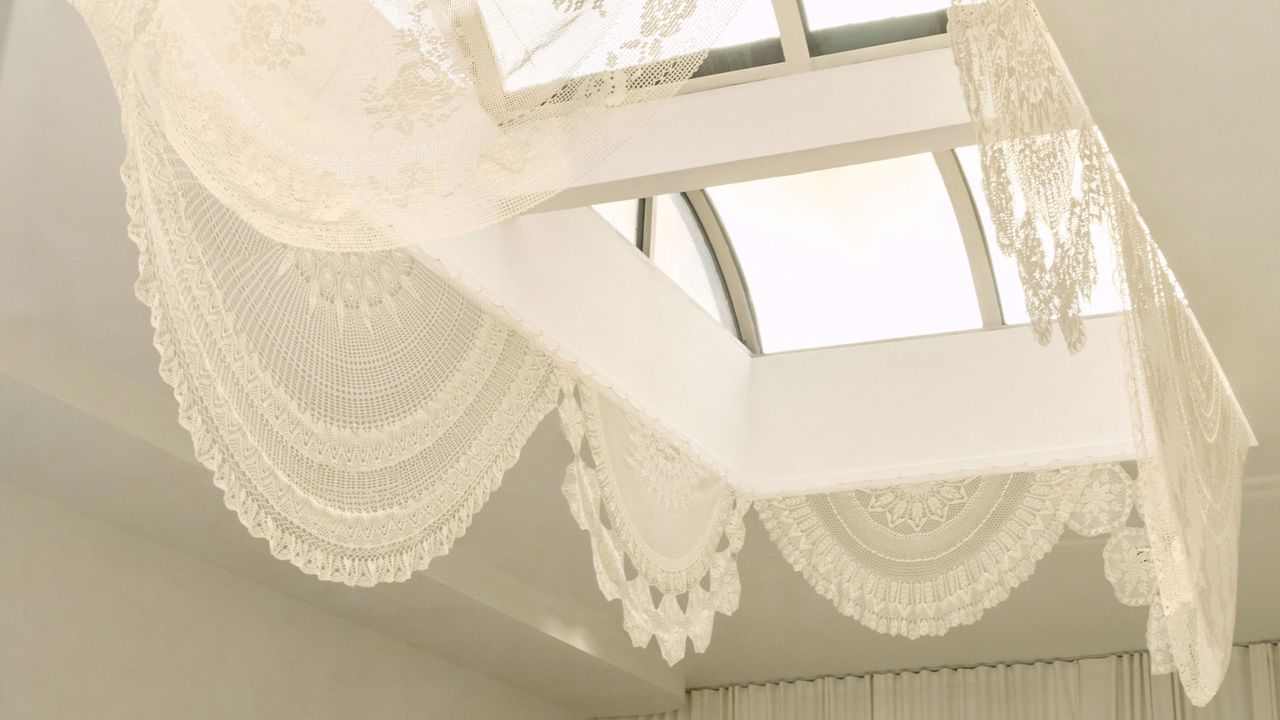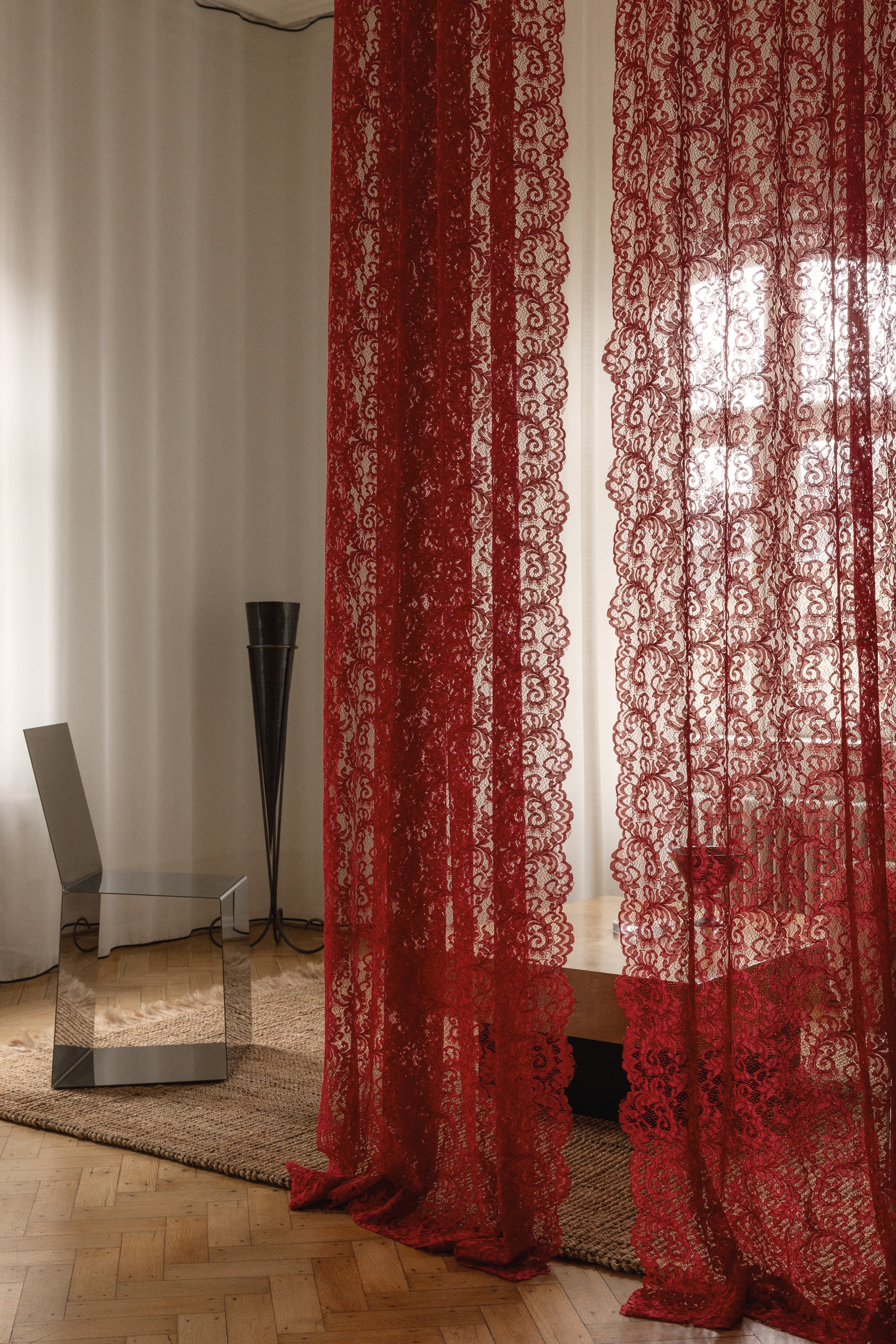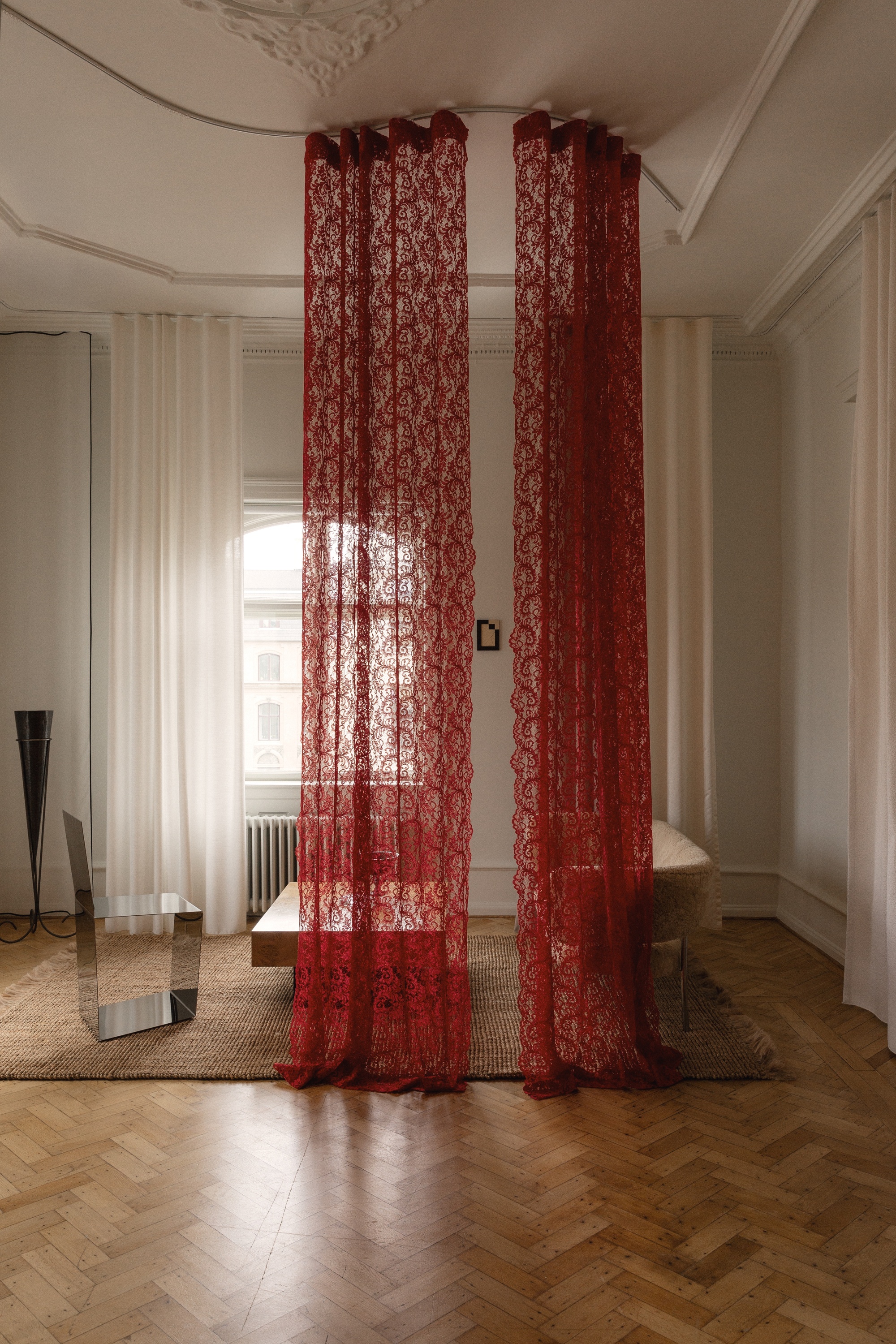
If you've missed the fact that lace has taken over the fashion world lately, then I'll admit, I'm slightly smug to be the one who gets to tell you. And, yes, the delicate detailing has made its way into our homes. Crochet tablecloths, lacy napkins, broderie anglaise bedding... your grandmother's linen press just became a goldmine.
Why now, you ask? A recent conversation in the Livingetc office landed on the idea that the current shift towards all things handcrafted in interiors (and beyond) is, in part, we think, a response — or rejection, rather — to AI and the rise of machine-made things. In a world where everything is getting faster and more perfect, it makes sense that we'd yearn for things that feel slower and more human.
As a result, craftsmanship has become more important than ever. And the tactile quality of knitted, crocheted, and laced details speaks directly to that growing interior design trend. Even if they're not, they feel handmade; human.


"There’s a strong movement towards authenticity, tactility, and craft in design," agrees Anna Szczęsna, who recently draped a Magda Butrym pop-up in New York in dreamy Polish lace details (shown at the top of this article). "Handcrafted textiles like lace and crochet carry cultural memory, but they also speak to sustainability and a slower, more meaningful way of living."
As for how to style these details in a way that feels fitting for a contemporary space, rather than old-fashioned, Anna says, "Using lace as a filter for light — for example, in a curtain, screen, or room divider — can feel modern and architectural," Plus, "Choosing oversized or reimagined patterns rather than dainty ones also gives lace a more contemporary edge."
What's important is creating a sense of contrast; "Mixing the old with something new, heavy textiles with translucent, and structured lace details with more organic ones," adds Nadia Al Zagir Balling, the creative director and co-founder of Danish curtain brand, &drape. "These subtle combinations of contrast tease the eye and create an exciting, sensory experience."
Bedding is another easy way to incorporate these lace details into your space. To ensure your bed doesn't end up feeling too fussy, layer in that contrast through sharper, more modern patterns and colors alongside those more delicate details.
Shop the Look
This H&M tablecloth is an easy entry point to the trend, featuring a border of broderie anglaise detailing. It's available in two sizes and as a table runner, too.
Bedding is perhaps the most common way we see this trend, and this set from M&S is a great example. Made from pure cotton, it's finished with an embroidered motif with cutwork detailing, and delicate ties.
When it comes to your table, Anna recommends pairing delicate lace details, such as these coasters, with "modern materials such as steel or stone makes it resonate in a more contemporary way."
Pottery Barn UK has plenty in the way of frilly and ruffled bedding, and this embroidered bedding with a scalloped detail would look beautiful layered against a more contemporary stripe pattern.
"We see lace as a way to bring softness and airiness into a space," says Anna. It works beautifully with tablecloths like this one, which add an air of romance to your dining experience.
Oliver Bonas recently released a collaboration with British fashion brand Shrimps, which includes woven placemats and this stunning crochet tablecloth, that's got plenty of 70s nostalgia about it.
A bit of a more modern way to embrace lace detailing, this quirky cork placemat by SELETTI mimics the soft movement of lace, and will be sure to start conversation at any dinner party.
But perhaps you just want to dip into the trend, and for that, these pillowcases from Mango are my favorites. With a delicate lacey trim running along one side, it adds just a touch of texture, without feeling too fussy.
Tekla launched its broderie anglaise bedding range at 3daysofdesign in Copenhagen earlier this year, and if this contemporary bedding brand is on board, you know the trend is officially cool.
Who said lace had to be fabric? This stunning openwork ceramic plate from Dior reimagines the delicate details in a whole new way. I'm not suggesting a whole setting with them, but one serving plate could make a nice statement.
Another variation of lace bedding from M&S. This one has vintage-inspired lace trims with shaped edging, which gives the design a bit of much-needed sharpness (the contrast we're after with this style).
"The key is to treat it almost as you would a material like glass or mesh — it can form a translucent layer that contrasts beautifully with stronger, heavier elements," says Anna. And these crocheted placemats are perfect for that.
And this is just the start of lace in our contemporary interiors. There are so many ways to approach these details in new and exciting ways.
"Another approach is to reinterpret lace through different materials and techniques — for instance, creating lace-like patterns with 3D printing, or cutting them into steel or other solid surfaces," says Anna. "This gives lace a new character and a spirit of modernity. In this way, lace can be understood and applied in many different ways in architecture and interiors, far beyond its traditional textile form."
If you're looking for a tougher approach altogether, but one that still has the same sense of craftsmanship and tactility, the modern basketweave interior trend might be just the thing for you.







